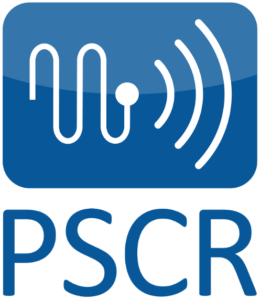 National Institute of Standards of Technology (NIST) Public Safety Communications Research (PSCR) Division plans on releasing a Federal Funding Opportunity (FFO) in the near future, called “NIST Public Safety Innovation Accelerator Program” (PSIAP FY17), for research and development grants and cooperative agreements. When it is released, the FFO will appear here, as well as on PSCR’s grants page.
National Institute of Standards of Technology (NIST) Public Safety Communications Research (PSCR) Division plans on releasing a Federal Funding Opportunity (FFO) in the near future, called “NIST Public Safety Innovation Accelerator Program” (PSIAP FY17), for research and development grants and cooperative agreements. When it is released, the FFO will appear here, as well as on PSCR’s grants page.
Below are some areas that the PSCR Division anticipates offering funding for:
- Device-to-Device (Off-Network) LTE Voice Communication
- Current public safety land mobile radios (based on P25 or TETRA) provide both indirect communication through a network of repeaters and “direct mode” communication between mobile units without relaying. While the physical layer technology is reasonably mature, there is work to be done in test and verification, as well as commercialization, and in fleshing out higher-layer functionality.
- Mission-Critical Push-To-Talk over LTE
- Group Push-To-Talk (PTT) is the core function of current public safety communication systems: At any given time, a user can belong to one or more talkgroups, and a speaker can initiate near-instantaneous broadcast/multicast communication to the selected talk group by pressing button. PTT functionality is well developed in current narrowband voice radios, and some implementations for broadband cellular networks exist. PSCR seeks to encourage the development, adoption, and evaluation of interoperable, standards-based, vendor-lock-in-free implementations of MCPTT over LTE.
- Indoor Positioning, Navigation, and Mapping (Location Based Services)
- Emergency responders have a compelling need to understand the physical environment in which they are working. By far, the most pressing need is to be able to locate first responders indoors (a) with sufficient accuracy to reliably know which room on which floor they are in (b) without requiring that the area in which they’re working has been instrumented (for example with beacons) in advance. That requires both “raw” positioning and reliable and timely dissemination of position information.
- Data-Driven Analytics for Public Safety Agencies
- Over the next decade, public safety responders will increasingly be connected to mobile broadband networks, enabling a far greater quantity and variety of data to be collected and exchanged. At this point, it’s largely an open question how that data might be used. Because the field of analytics is so large, and public safety’s needs are still largely undefined, PSCR is presently interested in exploratory research involving public safety agencies: To identify and make available existing (or newly-created) data sets, to develop/integrate tools for data handling and analysis, and to identify needs and opportunities for analytics.
- Communication-Oriented Modeling of Public Safety Responses
- PSCR seeks to develop a comprehensive model (or set of models) describing the communication needs associated with public safety operations. The goals are to (1) provide measures against which to evaluate proposed communication technologies, (2) enable planning and provisioning of operational systems, and (3) provide a common reference for modeling specific incident response scenarios.
- Application and Network Simulation and Modeling
- PSCR wishes to create a standard, shared pool of tools and resources for public safety communication research. Simulation and modeling tools are central to networking research, but many public-safety-relevant technologies are insufficiently supported by popular research tools. They are interested in both radio-level (that is physical/link) and network-level (that is, packet-oriented discrete event) simulation tools where each is appropriate.
- Programmable / Software Defined Radios
- As with the simulation and modeling above, PSCR is interested in creating LTE prototyping platforms for use by both PSCR and external researchers. The goal is to have programmable/SDR implementations that are sufficiently complete to build and test features which are not yet present in commercially-available devices.
- Resilient Systems
- Public safety communication systems must continue to work – and indeed may be most necessary – under circumstances in which other networks fail: Individual responders will need to operate in areas without cellular network coverage. Groups of responders will need to bring coverage with them, in scenarios ranging from a handful of police officers patrolling a remote road to thousands of wildland firefighters and support staff with semi-permanent command posts and camps. SCR wishes to ensure that – up to the limit of what is physically possible – public safety communication (including access to data and computation) continues to function in such scenarios.
To learn more about this FFO and other funding opportunities, please see this website and the PSCR Prize Competition website.









